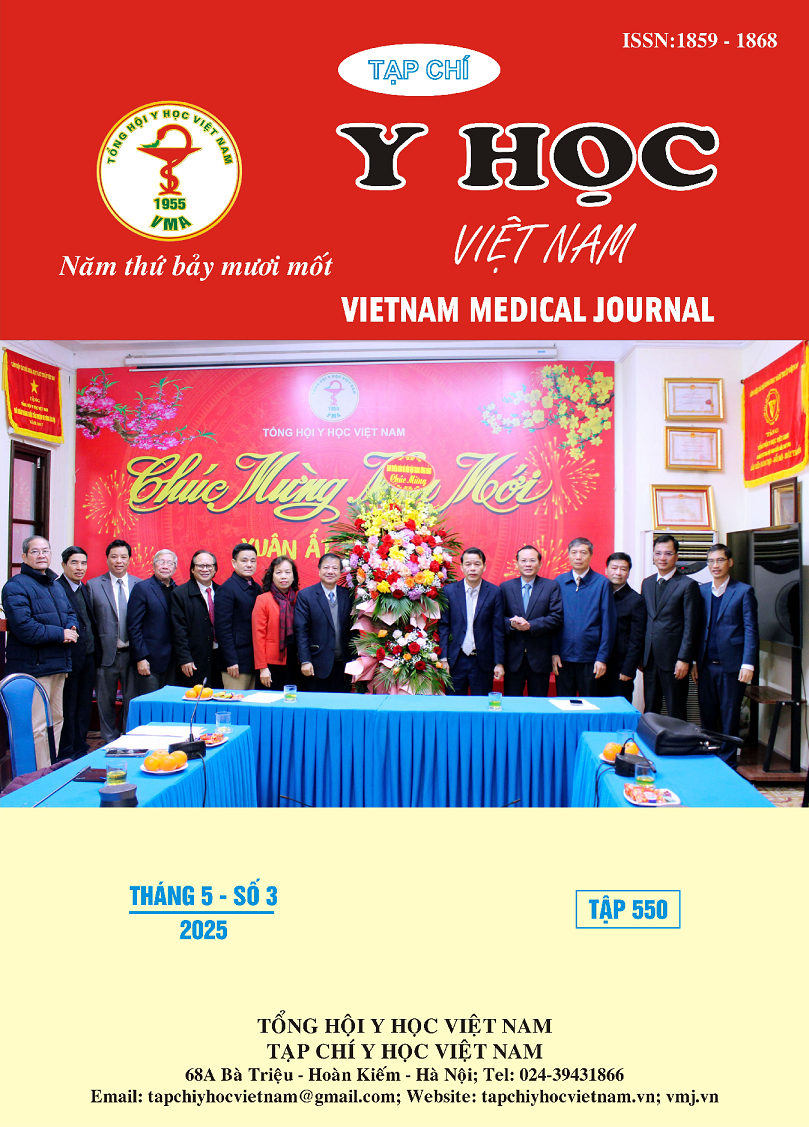EFFICACY OF LOW-LEVEL LASER LIGHT THERAPY AND ORAL MEDICATION IN THE TREATMENT OF TEMPOROMANDIBULAR JOINT DYSFUNCTION AT E HOSPITAL IN 2024
Main Article Content
Abstract
Objective: This study aims to review the clinical characteristics and evaluate the treatment efficacy of temporomandibular disorder (TMD) using low-level laser therapy (LLLT) and oral medication (celecoxib combined with eperisone) at E Hospital in 2024. Methods: A randomized clinical trial was conducted with 30 TMD patients, randomly assigned to two treatment groups. Group 1 received LLLT treatment, and Group 2 received oral medication. Data on pain levels (VAS) and maximum mouth opening were collected before and after 07 days of treatment. Results: The mean age was 35.6, with a female-to-male ratio of 2.3:1. The average pain level was 5.8/10, and the average mouth opening was 44mm. Pain levels decreased from 5.8 to 2.3 for LLLT and from 5.75 to 2.9 for oral medication (p < 0.05). The maximum mouth opening increased from 45.8mm to 48.8mm with oral medication (p = 0.0322) and from 42.2mm to 43mm with LLLT (p > 0.05). The difference between the two methods was not statistically significant. Conclusion: Both LLLT and oral medication are effective in treating TMD. The choice of treatment method may depend on factors such as cost, patient cooperation, and the specific circumstances of the healthcare setting. Further research with larger sample sizes and longer follow-up periods is needed to assess the stability and recurrence of the condition.
Article Details
Keywords
Temporomandibular disorder, TMD, LLLT, Celecoxib, Eperisone, pain relief, mouth opening
References
2. Prevalence of TMJD and its Signs and Symptoms | National Institute of Dental and Craniofacial Research. Accessed October 25, 2024. https://www.nidcr.nih.gov/research/data-statistics/facial-pain/prevalence
3. Ahmad SA, Hasan S, Saeed S, Khan A, Khan M. Low-level laser therapy in temporomandibular joint disorders: a systematic review. Journal of Medicine and Life. 2021;14(2):148. doi:10.25122/jml-2020-0169
4. Mélou C, Sixou JL, Sinquin C, Chauvel-Lebret D. Temporomandibular disorders in children and adolescents: A review. Archives de Pédiatrie. 2023;30(5): 335-342. doi:10.1016/ j.arcped.2023.03.005
5. Conti PCR, De Azevedo LR, De Souza NVW, Ferreira FV. Pain measurement in TMD patients: evaluation of precision and sensitivity of different scales. J of Oral Rehabilitation. 2001;28(6):534-539. doi:10.1046/j.1365-2842.2001.00727.x
6. Maini K, Dua A. Temporomandibular Syndrome. In: StatPearls. StatPearls Publishing; 2024. Accessed October 27, 2024. http://www.ncbi. nlm.nih.gov/books/NBK551612/
7. Ta LE, Dionne RA. Treatment of painful temporomandibular joints with a cyclooxygenase-2 inhibitor: a randomized placebo-controlled comparison of celecoxib to naproxen. Pain. 2004; 111(1): 13-21. doi:10.1016/j.pain.2004. 04.029
8. De Carli BMG, Magro AKD, Souza-Silva BN, et al. The effect of laser and botulinum toxin in the treatment of myofascial pain and mouth opening: A randomized clinical trial. J Photochem Photobiol B. 2016;159:120-123. doi:10.1016/ j.jphotobiol.2016.03.038


